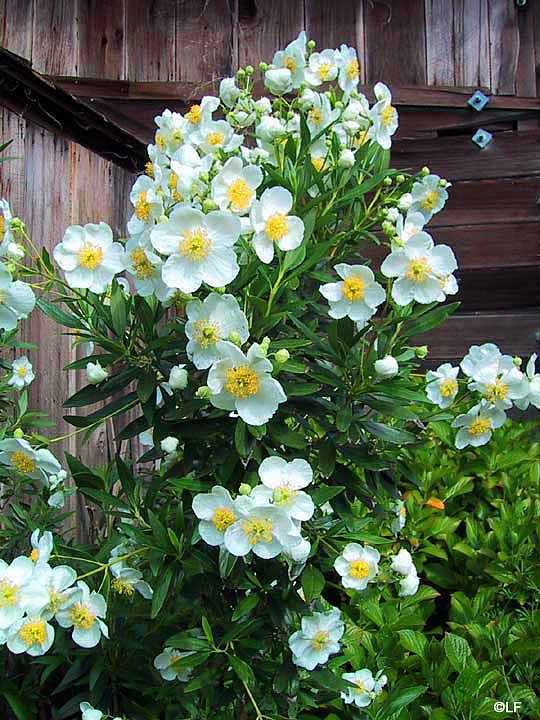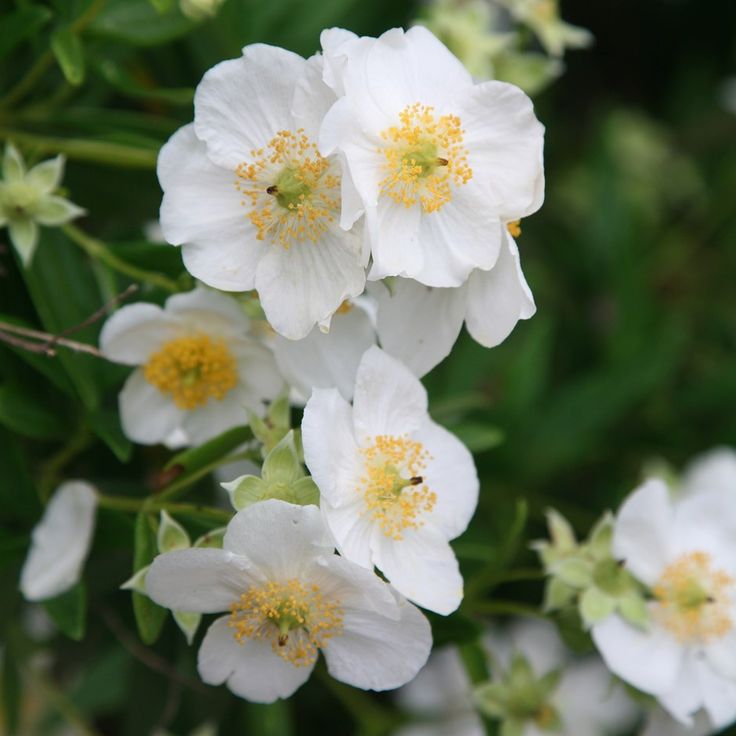Carpenteria californica

Carpenteria californica, commonly known as Bush Anemone or Californian Mock Orange, is a striking flowering shrub native to California and Oregon.
Revered for its delicate white flowers, glossy foliage, and sweet fragrance, Carpenteria californica holds a special place in both natural landscapes and cultivated gardens.
In this comprehensive article, we will delve into the botanical intricacies, habitat preferences, life cycle, ecological importance, conservation status, and care guidelines for this remarkable plant.
Botanical Description
Is an evergreen shrub belonging to the Hydrangeaceae family, characterized by its upright growth habit, slender branches, and lanceolate leaves.
The leaves are dark green, glossy, and arranged oppositely along the stems, providing an attractive backdrop for the plant's flowers.
In late spring to early summer, Carpenteria californica bursts into bloom, producing an abundance of large, white, saucer-shaped flowers with prominent yellow stamens at the center.
The flowers are highly fragrant, emitting a sweet scent reminiscent of orange blossoms, hence the plant's common name, Mock Orange.
The flowers give way to small, dry capsules containing seeds, which are dispersed by birds and other animals.
Habitat and Distribution
Carpenteria californica is native to the coastal regions and foothills of California and Oregon, where it thrives in a variety of habitats, including chaparral, oak woodlands, and mixed evergreen forests.
It is often found growing along stream banks, in canyon bottoms, and on north-facing slopes, where it benefits from filtered sunlight and moist, well-drained soils.
Carpenteria californica is particularly abundant in the northern and central coastal regions of California, where it adds beauty and diversity to native plant communities.
Life Cycle and Phenology
As an evergreen shrub, maintains its foliage year-round, providing color and structure in the landscape throughout the seasons.
Flowering typically occurs in late spring to early summer, with peak bloom periods varying depending on local climate conditions.
Bees and other insects pollinate the flowers, attracted by their sweet fragrance and abundant nectar.
After pollination, the plant produces small capsules containing seeds, which birds and other animals disperse.
Carpenteria californica may go through periods of dormancy during hot, dry summers. That way it conserves water and energy until colder, wetter conditions return in the fall.
Ecological and Cultural Importance
Carpenteria californica plays a significant ecological role as a habitat provider, food source, and pollinator attractor in native plant communities.
The flowers attract a variety of pollinators, including bees, butterflies, and hummingbirds, contributing to the health and diversity of local ecosystems.
Additionally, has cultural significance among the indigenous peoples of California. Since for a long time they have used the plant for medicinal, ceremonial and utilitarian purposes.
Landscapers and horticulturists also value it for its ornamental qualities, including fragrant flowers, glossy foliage, and drought tolerance.

Caring for Carpenteria californica
Sunlight
Plant Carpenteria californica in a location that receives full sun to partial shade, as it prefers abundant sunlight for optimal growth and flowering.
Watering
Provide regular water during the establishment period, then gradually reduce watering once the plant is established.
Carpenteria californica is drought tolerant once established and prefers well-drained soil.
Soil
Plant in well-drained, loamy soil with a neutral to slightly acidic pH.
Carpenteria californica is adaptable to a variety of soil types but prefers soil with good drainage.
Pruning
Prune lightly after flowering to maintain a compact shape and remove dead or damaged branches.
Carpenteria californica can be pruned to encourage bushier growth and enhance its ornamental appearance.
Mulching
Apply a layer of organic mulch, around the base of the plant to help retain soil moisture and suppress weeds.
Avoid covering the stems or foliage with mulch, as this can lead to rot and disease.
Following these care guidelines enables you to cultivate healthy Carpenteria californica, preserving native species and enhancing landscapes' beauty.
Whether as specimen plants or hedges, they enchant with their fragrance and significance.
Leave a Reply
You must be logged in to post a comment.